|
-
Very Active Member
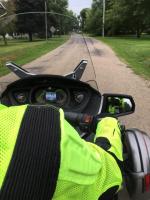
 Tire pressure recommendations Tire pressure recommendations
I've been trying to find info to support the 18-20 PSI argument for a real car tire on the rear of a Spyder. This is the best I could do. The last sentence is particularly interesting.
This is from a pdf file downloaded from www.lehmantrikes.com/assets/docs/uploads/Manuals/techbook-master.pdf
THE IMPORTANCE OF PROPER TIRE PRESSURE-TECHNICAL ARTICLE WHAT IS THE CORRECT TIRE PRESSURE FOR MY TRIKE?
There has been a lot of confusion and misinformation out there when it comes to tire pressures for trike riders. Most all trikes have a motorcycle tire up front and automotive tires in the rear. The motorcycle compliance label has a recommended pressure for both the front and the rear tires. Now that your motorcycle is a trike are these still the pressures to use? Since we are trying to clear up the confusion and misinformation… the answer is yes and no! Let me explain more fully. We, Lehman Trikes, have always recommended that you maintain the same pressure the motorcycle manufacturer lists on the compliance label for the front wheel. There is no reason to change this pressure. That’s the “yes”. The “no” is a bit more involved. First of all, the two automotive tires like those installed on the rear of your trike are a completely different design than the single motorcycle tire they replace. Now for some history. Lehman Trikes has been building and riding trikes for 25 years. Our founder, John Lehman, and many of the dedicated trike riders that work here have experimented for years trying to find what air pressure in the rear tires gives you the best ride, handling and tire life. What they found and recommended for years was an air pressure in the 20 to 22 psi range worked best. So why, if you look at a current Lehman Trikes Owner’s Manual or the Owner’s Manual for a H-D Tri Glide, do you see a 26 psi recommendation for the rear tires? When I came to Lehman Trikes several years ago one of the things I was asked to do was to confirm with the manufacturer of our tires that they would support our recommendation of 20 to 22 psi air pressures for our application. What I learned is that no tire manufacturer will recommend anything less than 26 psi for standard automotive tires.
Where the 26 psi number came from is an interesting and somewhat involved story. There is a regulatory organization called the Tire and Rim Association (T&RA) which, of course, standardizes specifications for all different applications for tires and wheels (rims). One of the things that they provide is a load carrying capacity for each tire size at different air pressures. In their old reference books they listed load carrying capacities for tire pressures all the way down to 20 psi. I don’t know what year they changed but in 1999 they still listed load carrying capacities down to 20 psi. Do any of you remember the big public fight that went on between Firestone and Ford Motor Co a few years ago? As I recall, people were rolling over in their Ford Explorer’s and Ford and Firestone were vigorously pointing the finger at each other. The final out come was that it was determined that people were reducing the air pressure in their tires to improve ride quality. That would not have been a problem but they failed to increase the pressure when the vehicle was more heavily loaded. As a result, the T&RA elected to eliminate the lower pressure ratings from their reference books. In support of the T&RA, the tire manufacturers will not support running their tires at anything less than 26 psi. So how much difference does it make? Why not just run them at a higher pressure? Running the rear tires on your trike at a higher tire pressure has a dramatic impact on how the trike rides and handles. For each additional psi of pressure you increase the rigidity of the sidewall. At maximum pressure the sidewalls of your tires are quite rigid. Rigid sidewalls will increase the occurrence of the low speed “head shake” inherent in all three wheeled vehicles. They will also transmit more of the bumps in the road to you and your passenger. As you reduce the tire pressure it allows the sidewall to provide additional “cushioning” when riding over irregularities in the road surface. Certainly you do not want to reduce the air pressure too far because that will adversely affect the handling of the trike.
The “cushioning” effect of the sidewalls is, of course, reduced if you are using a tire that has very little sidewall. For example, those 18 or 20 inch rims that look so cool on the back of your trike do all the wrong things for ride comfort and low speed head shake. A standard 15 or 16 inch rim with a properly sized, properly inflated tire will give you the best ride quality and the least amount of head shake. The most commonly used tire on the rear axle of a Lehman Trike is the P205/70R15. As a point of interest, in the 1999 T&RA reference book it lists a load carrying capacity of 1146 lbs for a standard P205/70R15 tire with 20 psi of air pressure.
On the road again...........and forever young!
2013 RT-S SE 5

Yesterday is a cancelled check.
Tomorrow is a promissory note.
Today is cash.......spend it wisely.
-

The above touches on a point I wanted to explore, but then the other thread went off the rails... sidewall flex.
It seems to me that all radial tires are designed to flex a little; that is the feature that differentiates them from prior bias-ply tires, and causes them to give their superior ride quality while delivering their optimal economy and safety. So............
I posit that the following statement is true, and could be a reliable guide to proper PSI for any radial tires, in any application (except 2-wheelers):
Inflate radial tires until the sidewall bulge appears the same as it would on the heavier vehicles the tire is intended for.
Therefore, weaker Kendas would require more PSI, car tires on a Spyder would take less. Right? 
So I now ask whether you agree or disagree, and why? (Perhaps a YES/NO poll should be created, if there is enough interest.)
NEW - 2015 RT Limited SE6 Intense Red Pearl - 07/21/15
Retained the old mirrors with TricLed Signals
General Altimax RT43 rear tire (at...17,000 miles) Ran for 36,500 miles
Michelin Defender.......rear tire (at...53,500 miles) Ran for 60,700 miles
Riken Raptor HR.........rear tire (at 114,200 miles)
Vredestein Quatrac 5 front tires (at 70,500 miles, first new fronts!)
Gear Brake Decelerometer Module
OLD - 2012 RT Limited SE5 Pearl White - 01/31/13 - Traded in at 32,600 miles.
BajaRon Anti-sway Bar
Kumho ECSTA AST rear tire (at 14,200 miles)
TricLed Turn Signals in Mirrors
-

There's a HUGE difference between a Lehmann conversion; and a Can Am Spyder.
Virtually nothing that they say applies to our bikes. 
-
Very Active Member
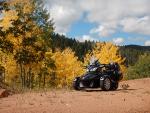
 I agree - I agree -
"Therefore, weaker Kendas would require more PSI, car tires on a Spyder would take less. Right?  " "
Yes.
Beyond that generalization, your ryding style and requirements and biases are your choice.
I value longer wear life as we dont ryde agressively or need maximum grip. Any choice is a trade-off between wear life/ fuel economy and the "grippiness" or comfort of the ride.
Your ryde, your choice.
Last edited by AeroPilot; 09-05-2018 at 08:24 AM.
Reason: quotes
07 Shadows, Aero, Spirit gone but not forgotten
03 Harley Sportster, 07 RK moved on
11 RT- 76,000 mi, 15 RT-S- 44,000 mi, traded for current 15 base RT and 16 F3T
-
Very Active Member
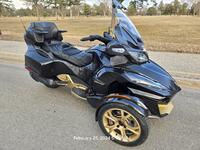

I just want to say it's easier to set my digital tire inflator to 18 lbs and fill all three tires to that before riding and my non- kenda tires have gone three times farther now than my original rear kenda did. The fronts were still OK treadwise, but changing them smoothed out my ride.
Safe Rides,
David and Sharon Goebel
Both Retired USAF Veterans
2018 Anniversary Edition RT Limited
Baja Ron ultimate swaybar. Vredestein tires, Baja Ron Front Shock Pre-load adjusters, Pedal Box, See my Spyder Garage
IBA 70020 |
 |
-
 Oh my, not this again... Oh my, not this again...
-
Very Active Member


 Originally Posted by Bob Denman

There's a HUGE difference between a Lehmann conversion; and a Can Am Spyder.
Virtually nothing that they say applies to our bikes. 
Bob, I don't want this to devolve into a pissing contest for ANY reason. I am fully aware that there is a difference between a delta and a tadpole trike. My intent was not a comparison of the two but rather to show what they had listed for the weight capacity of a comparable size tire that we use on our Spyders. That said, the performance of similar tires will be similar for a vehicle with the same number of tires.
I don't want this to be construed as a directive for mandatory tire pressure. Far from it. After all the vitriolic arguments back in forth between the different camps for rear tire pressure and the claims of "no science", I found this and thought it did lend credence to the 18-20 PSI point of view.
It may not be absolutely scientifically proven but it is the closest I've found so far, one way or the other. I did think that the mention of the weight carrying capacity of 1146 pounds for one tire was rather significant. That is more than the weight of an entire RT. Now throw in the extra capacity of two additional tires and you have far exceeded the carrying capacity of an RT.
On the road again...........and forever young!
2013 RT-S SE 5

Yesterday is a cancelled check.
Tomorrow is a promissory note.
Today is cash.......spend it wisely.
-
Very Active Member


2dogs, if everyone shows at least a modicum of respect and maturity, this thread will not be like so many of late.
On the road again...........and forever young!
2013 RT-S SE 5

Yesterday is a cancelled check.
Tomorrow is a promissory note.
Today is cash.......spend it wisely.
-

 Originally Posted by BoilerAnimal

2dogs, if everyone shows at least a modicum of respect and maturity, this thread will not be like so many of late.
I certainly hope so. Keep up the good faith.
-
Very Active Member


Reading the Lehman comments I take it that tire manufacturers did not stop showing loads for pressures below 26 psi because lower pressures are not valid, it was because average Joe and Jill American did NOT keep the pressure up where it needed to be for the loads they actually were carrying. Not listing load capacities for pressures less than 26 was a defensive move on their part to offset people's laziness, incompetence, or ignorance in running the correct pressure for their situation.
I'm sure no tire manufacturer is going to come tell us that 18 psi is OK for a car tire on the rear of the Spyder simply because some idiot will take it to mean they should be able to run 22 psi safely in the tires for their baby-sized car. I wonder what Elio is going to be able to publish, with tire manufacturers consent, if and when they actually start production. What does Vanderhall say, or Morgan?
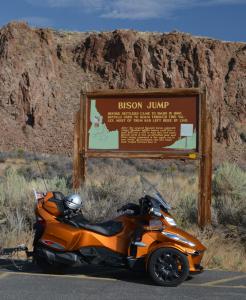
2014 Copper RTS
Tri-Axis bars, CB, BajaRon sway bar & shock adjusters, SpyderPop's Bumpskid, NBV peg brackets, LED headlights and modulator, Wolo trumpet air horns, trailer hitch, custom trailer harness, high mount turn signals, Custom Dynamics brake light, LED turn signal lights on mirrors, LED strip light for a dash light, garage door opener, LED lights in frunk, trunk, and saddlebags, RAM mounts and cradles for tablet (for GPS) and phone (for music), and Smooth Spyder belt tensioner.
-
Very Active Member
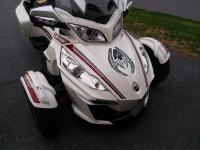

 Originally Posted by missouriboy

The above touches on a point I wanted to explore, but then the other thread went off the rails... sidewall flex.
It seems to me that all radial tires are designed to flex a little; that is the feature that differentiates them from prior bias-ply tires, and causes them to give their superior ride quality while delivering their optimal economy and safety. So............
I posit that the following statement is true, and could be a reliable guide to proper PSI for any radial tires, in any application (except 2-wheelers):
Inflate radial tires until the sidewall bulge appears the same as it would on the heavier vehicles the tire is intended for.
Therefore, weaker Kendas would require more PSI, car tires on a Spyder would take less. Right? 
So I now ask whether you agree or disagree, and why? (Perhaps a YES/NO poll should be created, if there is enough interest.)
I also hope this thread stays clean. There is already good information here. Thanks BoilerAnimal. As for sidewall bulge missouriboy, I think that might get you in the ballpark. But knowing what pressure you are at and using the 4 psi rule is probably the best peace of mind for every rider. Thanks for the info everyone! 
AKA Jud Smales, Four Year Spyder Ryder!
"Quando Omni Flunkus, Moritati"
The Critter 2016 RT-S
Cat Bypass from Lamonster
BajaRon Sway Bar
Hella dual horns with relay
BRP Hitch with trailer module
Foam Grips
Adjustable Air Deflectors
Driver & Passenger Gel Pads in Seat
Shorty antenna
Ultraguard half cover
Gremlin bell from my son
Break Stripe Kit from Wrap My Spyder

-
Very Active Member
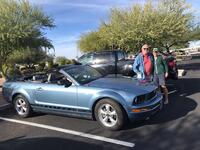

Far, far away and long, long ago, I heard of a way to make sure each tire under any application was aired up correctly. Makes no difference if the tire is on a 40' RV, motorcycle, trailer, or whatever. That guideline is that the tire should increase 10% in pressure from dead cold to operating temperature. Don't know the source and don't know if it's true, but sounds good.....
2005 Windveil Blue Premium Mustang Convertible
2008 Honda GL1800/California Sidecar Trike, SOLD
2014 Platinum Silver Satin Spyder RTL, SOLD
Semper Fi

-
Very Active Member
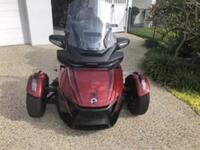
Harrington, Australia
2021 RT Limited
Setup for Tall & Big.... 200cm/6'7", 140kg/300lbs, 37"inleg.
HeliBars Handlebars
Brake rubber removed to lower pedal for easier long leg/Size 15 EEEEW boot access.
Ikon (Aussie) shocks all round.
Russell Daylong seat 2” taller than stock (in Sunbrella for Aussie heat & water resistance)
Goodyear Duragrip 165/60 fronts (18psi) - provides extra 1/2” ground clearance.
Kenda Kanine rear.
2021 RT Limited , Brake pedal rubber removed for ease of accessing pedal with size 15 boots. Red
-
Very Active Member


 Originally Posted by canamjhb

Far, far away and long, long ago, I heard of a way to make sure each tire under any application was aired up correctly. Makes no difference if the tire is on a 40' RV, motorcycle, trailer, or whatever. That guideline is that the tire should increase 10% in pressure from dead cold to operating temperature. Don't know the source and don't know if it's true, but sounds good.....
That seems very reasonable in that each type of vehicle weighs a much different amount than the others.
Myself, I always considered the 4 psi increase subjective to the vehicles weight and cold tire pressure.
A 10% increase on tires with cold pressure of 20 psi would see 22 psi hot.
A 4 psi increase on a cold tire at 18 psi still comes in at 22 psi.
A car tire at say 35 psi would show 38.5 psi vs 39 psi.
If we use a motorhome at say 60 psi cold it would be 66 psi vs 64 psi.
Granted small differences, but the 4 psi increase on the 18 psi cold tire is over 20% increase, on a light vehicle which to me seems excessive.
I have no formal training in tire pressure selection and found the pressures I preferred, on the roads I ride, based on stability, cornering feel, and ride smoothness.
It is accepted that tires with lower pressures will generate more heat. Also tires more heavily loaded will generate more heat. Payload, meaning a rider or riders, plus baggage, can vary a huge amount between two identical Spyders. This alone may find variances in what owners deem as a best pressure for them.
Chassis mods, such as swaybars or higher performance suspension, even subtle variances in how true the wheels are aligned when loaded with payload can induce more tire scrub, adding heat.
Possibly, if I feel motivated to get the gauge out after a ride, I can see how close we are to 10%.
-
Active Member
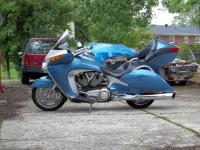
 to follow to follow
-
Very Active Member
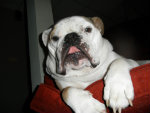
 SPYDER TIRE PRESSURES SPYDER TIRE PRESSURES
" Butts " lie, but if your name is Ayrton Senna your opinion matters …………. I ( accidently ) had my well used Michelin Hydro-edge rear tire down to 8 psi ….. it was a bit squirrely but the " BEAD " didn't brake...……… 99.9% of everything written about tire pressures is from tests on cars & trucks or for TWO wheel Mtc's using MOTORCYCLE TIRES..... comparing or using any of this Data in regards to our Spyders is foolhardy.... My OPINION is based on education AND over 100,000 miles of riding 3 different Spyders using car tires...… If you think I'm making this up - fine ….if you think I'm actually lying - fine...… If you think the NANNY will save you from every bad decision - fine. I'm willing to stake my LIFE on my tire pressure OPINION ………… But so are YOU, whether you realize it or not ………….ride safe - ride happy 
-
Very Active Member


 Originally Posted by BLUEKNIGHT911

" Butts " lie, but if your name is Ayrton Senna your opinion matters …………. I ( accidently ) had my well used Michelin Hydro-edge rear tire down to 8 psi ….. it was a bit squirrely but the " BEAD " didn't brake...……… 99.9% of everything written about tire pressures is from tests on cars & trucks or for TWO wheel Mtc's using MOTORCYCLE TIRES..... comparing or using any of this Data in regards to our Spyders is foolhardy.... My OPINION is based on education AND over 100,000 miles of riding 3 different Spyders using car tires...… If you think I'm making this up - fine ….if you think I'm actually lying - fine...… If you think the NANNY will save you from every bad decision - fine. I'm willing to stake my LIFE on my tire pressure OPINION ………… But so are YOU, whether you realize it or not ………….ride safe - ride happy 
Mike, respecting you, your post, your experience as a Spyder rider, and education, first, Senna was a great driver, and most great drivers have a very good feel of what is happening while they drive. Additionally, when his tires were tested, in no way were they testing Sennas tires for a pressure increase, they tested pressures and chassis setup via a pyrometer and temperature checks across the tires tread. Pressures would be adjusted to obtain desired tread temperatures across the tread. However, he was a great driver and no doubt could feel when tires were going away.
So, back on track regarding the Spyder and tire pressures for it, not with oem Kenda tires but rather automotive tires. These are your own words, taken from your post.
"99.9% of everything written about tire pressures is from tests on cars & trucks or for TWO wheel Mtc's using MOTORCYCLE TIRES..... comparing or using any of this Data in regards to our Spyders is foolhardy...."
A simple question, how is it that 4 psi pressure increase from temperature change as a result of rolling friction where the tire contacts the road, can be a uniform standard pressure increase for all vehicles, light or heavy, narrow tire or wide tire, and irrelevant of initial cold pressure to support the vehicles weight. Following that criteria, an semi truck or bicycle could apply the same criteria. So I ask, beyond 4 psi, and pyrometers checking tread temps is there additional ways to validate acceptable tire pressure.
I personally have tried various tire pressures on our Spyder. For various reasons related to how the vehicle feels to the rider, I have not been able to run pressures you prescribe. I certainly am no Senna, however, I have tested many setups on two wheel vehicles, and do know that even the best on paper setups sometimes do not induce confidence to the rider. If the rider lacks confidence in the setup, it becomes difficult to ride at the pace needed with full concentration. The lower pressures, our chassis setup, tire choice, roads etc. did not inspire the confidence in the vehicles handling, whereas slightly higher pressures did. I have not tested tread temps, nor run against a clock, and no I have never rechecked hot tire pressures as of yet. If and when I do, I will report back with base pressures and heated pressures.
-
Very Active Member


Mike, in fairness to the 4 psi increase, I too some time to research what was out there. The 4 psi increase info is not difficult to find. However, finding the 4 psi increase to validate proper tire pressure, well it was no where.
I found references from various tire sites and even a major manufacturer referenced 4 psi. Some referenced 4 psi checks if driven under 45 mph but 6 psi if driven over 45 mph or for an extended time.
In each case, the reference reverted back to this 4 psi increase was a method to check the tires for a hot inflation pressure, and the tires should be rechecked to manufacturers specs when cold. So, in a wide sense, for cars, since each reference did mention loading, and tire size, if the manufacturer has found the correct cold tire pressure for your car, under proper conditions, when driven under 45 mph not for an extended time, you could check the tire pressure for a 4 psi pressure increase. The base reference they worked from was a 32 to 34 psi tire if I recall correctly, so about a just over a 10% increase hot.
While emphasis was placed on following the manufacturers data plate for recommended tire pressures, most references also noted that the pressure should never exceed maximum sidewall rated pressure, and stated to reduce below 4 psi if needed not exceed this.
It is all very interesting. I would like to read how an oem vehicle manufacturer determines tire pressures. I suspect it still reverts to tread temps, and feel.
-
Very Active Member

 TIRE PSI INFO TIRE PSI INFO
 Originally Posted by PMK

Mike, in fairness to the 4 psi increase, I too some time to research what was out there. The 4 psi increase info is not difficult to find. However, finding the 4 psi increase to validate proper tire pressure, well it was no where.
I found references from various tire sites and even a major manufacturer referenced 4 psi. Some referenced 4 psi checks if driven under 45 mph but 6 psi if driven over 45 mph or for an extended time.
In each case, the reference reverted back to this 4 psi increase was a method to check the tires for a hot inflation pressure, and the tires should be rechecked to manufacturers specs when cold. So, in a wide sense, for cars, since each reference did mention loading, and tire size, if the manufacturer has found the correct cold tire pressure for your car, under proper conditions, when driven under 45 mph not for an extended time, you could check the tire pressure for a 4 psi pressure increase. The base reference they worked from was a 32 to 34 psi tire if I recall correctly, so about a just over a 10% increase hot.
While emphasis was placed on following the manufacturers data plate for recommended tire pressures, most references also noted that the pressure should never exceed maximum sidewall rated pressure, and stated to reduce below 4 psi if needed not exceed this.
It is all very interesting. I would like to read how an oem vehicle manufacturer determines tire pressures. I suspect it still reverts to tread temps, and feel.
Paul - first I'd like to Thank you for your civility in your two ( above ) posts , others here can't seem to control themselves  , one of whom is now in a " time-out "...…. The short non-hyper technical answer is A. because they don't have to provide that info …. and B.- the answer is almost meaningless in terms of normal riding. ….. Under Racing circumstances this info would be gathered by each individual Team for their use in determining what works best for their vehicle and specific driver ( yes it's that technical )….But for everyday use the variables are so large , the manufacturers are only concerned about getting within certain parameters' of the safe range …… most of this info is considered " Proprietary " and therefore not divulged..... Are Heat signatures important - Yes , but they aren't critical. Not in the sense that is really meaningful..... The Basic Build criteria for Auto tires is met by ALL manufacturers who are more concerned with OVER-Loading the tires than with Under-stressing them. What I and I'm sure Peter Aawen do is use what we know about the Entire PSI thing and how it relates to tires ( in general ) and come up with a Well educated estimate of what Should work best for our Spyders..... To the best of my knowledge No-one has done any technical testing of Auto tires on Spyders and probably never will.....People are looking for answers/info that doesn't exist, and some of them get their Panties in a Wad because their Questions aren't being answered.....Hope this helped answer your questions .................................................. ..On another note: A few years back I sought your advice on the Shock Angle thing I was working on, because I …..THOUGHT …. you had worked for OHLINS ..... If I remember correctly, I NEVER asked you to prove your level of Expertise about your knowledge base. I was intelligent enough to assume that if some company was smart enough to hire you THEY did their homework about it !!!!...... So what Gaul's me, is the fact the I'm Badgered about Proving my credentials. Except for one time, I've never asked them to prove theirs......... To supply the info THEY have required, I would have to go to the Landfill where this stuff has been buried for over three decades.... My X - deposited it there long before the divorce became Legal ........ Mike , one of whom is now in a " time-out "...…. The short non-hyper technical answer is A. because they don't have to provide that info …. and B.- the answer is almost meaningless in terms of normal riding. ….. Under Racing circumstances this info would be gathered by each individual Team for their use in determining what works best for their vehicle and specific driver ( yes it's that technical )….But for everyday use the variables are so large , the manufacturers are only concerned about getting within certain parameters' of the safe range …… most of this info is considered " Proprietary " and therefore not divulged..... Are Heat signatures important - Yes , but they aren't critical. Not in the sense that is really meaningful..... The Basic Build criteria for Auto tires is met by ALL manufacturers who are more concerned with OVER-Loading the tires than with Under-stressing them. What I and I'm sure Peter Aawen do is use what we know about the Entire PSI thing and how it relates to tires ( in general ) and come up with a Well educated estimate of what Should work best for our Spyders..... To the best of my knowledge No-one has done any technical testing of Auto tires on Spyders and probably never will.....People are looking for answers/info that doesn't exist, and some of them get their Panties in a Wad because their Questions aren't being answered.....Hope this helped answer your questions .................................................. ..On another note: A few years back I sought your advice on the Shock Angle thing I was working on, because I …..THOUGHT …. you had worked for OHLINS ..... If I remember correctly, I NEVER asked you to prove your level of Expertise about your knowledge base. I was intelligent enough to assume that if some company was smart enough to hire you THEY did their homework about it !!!!...... So what Gaul's me, is the fact the I'm Badgered about Proving my credentials. Except for one time, I've never asked them to prove theirs......... To supply the info THEY have required, I would have to go to the Landfill where this stuff has been buried for over three decades.... My X - deposited it there long before the divorce became Legal ........ Mike 
Last edited by BLUEKNIGHT911; 09-11-2018 at 10:21 AM.
-
Ozzie Ozzie Ozzie
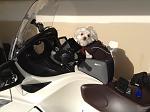

 The other thing to remember is that 'the 4psi Rule' is a 'Rule of Thumb' - it's a handy, easy, relatively simple, & repeatable method of giving you/most riders/drivers a 'tool' that will let them work out or even confirm that the pressures they are using are in the right ball park for what they are doing/the load their tires are being subjected to right now. It isn't specifically exact, and there are some circumstances (not too many tho!) where it might not be any better than a SWAG, but for most riders/drivers it is WAAAAYYYYY BETTER than just stumbling around in the wilderness like they normally do!! The other thing to remember is that 'the 4psi Rule' is a 'Rule of Thumb' - it's a handy, easy, relatively simple, & repeatable method of giving you/most riders/drivers a 'tool' that will let them work out or even confirm that the pressures they are using are in the right ball park for what they are doing/the load their tires are being subjected to right now. It isn't specifically exact, and there are some circumstances (not too many tho!) where it might not be any better than a SWAG, but for most riders/drivers it is WAAAAYYYYY BETTER than just stumbling around in the wilderness like they normally do!! 
This 'Rule of Thumb' DOES take into account ALL the variables that will effect tire pressures in the riding/driving that you've just done, so any variable likely to impact the pressure/temperature change in that time HAS ALREADY DONE SO!!(Do remember, this rule of thumb calls for you to set your pressures to those you think are right to start with, then you ride/drive for an hour AND YOU CHECK THEM AGAIN, looking for that 4psi increase! Too much increase means the start pressure was too low; too little increase means the start pressure was too high!) It's up to YOU to make a judgement call & an educated guess on the riding/driving that you are about to do if you want to, and to use the info gained from the riding/driving you've just done & your 2nd pressure check plus what you know about/expect to face in the riding/driving ahead in order to confirm that your chosen pressures this morning were correct or if they need changing to suit what's coming even better - and the 4psi Rule is just one of quite a few tools that can help guide you in getting fairly close to what is 'right' without doing all the hard stuff!! Sure, if you want more traction & are prepared to forgo some potential tire life, you could choose to go for a 6 psi increase instead of just 4! Or if you want crisp handling at the potential cost of some ultimate wet road traction, you could aim for 2 psi.... neither is likely to impact massively nor are they likely to be EXACTLY as correct as they could be if you wanted to measure all the identifiable variables, estimate the impact of the rest, and go thru the whole raft of processes & calculations & repeated tests over thousands of miles that will eventually let you get as close as possible to the 'absolutely ideal pressure for those specifically identified sets of circumstances'; but it is pretty safe to say that as far as 'Rules of Thumb' go, the 4psi Rule is going to be a pretty handy tool for most riders/drivers to confirm that their tire pressures are a little closer to the optimal pressure for what they are subjecting their tires to today than they might be if they just used the tire placard 'one size fits all' guide or took that stupid wild arsed guess!!  And if you can't be bothered to use it or anything else in order to better set your tire pressures at something other than the 'one size fits all loads, tires, circumstances, roads, & weather conditions' pressure for the OE tire that's printed on the tire placard, then that's your choice & your risk! And if you can't be bothered to use it or anything else in order to better set your tire pressures at something other than the 'one size fits all loads, tires, circumstances, roads, & weather conditions' pressure for the OE tire that's printed on the tire placard, then that's your choice & your risk! 
2013 RT Ltd Pearl White
Ryde More, Worry Less!
-
Very Active Member


 Originally Posted by BLUEKNIGHT911

Paul - first I'd like to Thank you for your civility in your two ( above ) posts , others here can't seem to control themselves  , one of whom is now in a " time-out "...…. The short non-hyper technical answer is A. because they don't have to provide that info …. and B.- the answer is almost meaningless in terms of normal riding. ….. Under Racing circumstances this info would be gathered by each individual Team for their use in determining what works best for their vehicle and specific driver ( yes it's that technical )….But for everyday use the variables are so large , the manufacturers are only concerned about getting within certain parameters' of the safe range …… most of this info is considered " Proprietary " and therefore not divulged..... Are Heat signatures important - Yes , but they aren't critical. Not in the sense that is really meaningful..... The Basic Build criteria for Auto tires is met by ALL manufacturers who are more concerned with OVER-Loading the tires than with Under-stressing them. What I and I'm sure Peter Aawen do is use what we know about the Entire PSI thing and how it relates to tires ( in general ) and come up with a Well educated estimate of what Should work best for our Spyders..... To the best of my knowledge No-one has done any technical testing of Auto tires on Spyders and probably never will.....People are looking for answers/info that doesn't exist, and some of them get their Panties in a Wad because their Questions aren't being answered.....Hope this helped answer your questions .................................................. ..On another note: A few years back I sought your advice on the Shock Angle thing I was working on, because I knew you had worked for OHLINS ..... If I remember correctly, I NEVER asked you to prove your level of Expertise about your knowledge base. I was intelligent enough to assume that if OHLINS was smart enough to hire you THEY did their homework about it !!!!...... So what Gaul's me, is the fact the I'm Badgered about Proving my credentials. Except for one time, I've never asked them to prove theirs......... To supply the info THEY have required, I would have to go to the Landfill where this stuff has been buried for over three decades.... My X - deposited it there long before the divorce became Legal ........ Mike 
To clarify, I have never worked for Ohlins.
In regards to your shock bracket project, your data, essentially the suspension geometry was mapped by myself, and I gave you suspension leverage ratio changes compared to stock, changes in wheel travel based off lofted hard point data.
I offered my opinion of what the data represented, and how it would alter chassis handling. You were the designer, fabricator and test rider. I merely presented what the data represented.
-
Very Active Member

-
-
Very Active Member

 being - back being - back
-
Very Active Member


 Originally Posted by BLUEKNIGHT911

Actually no, had somewhere to be and no time for a technical reply, patience, in time I will reply. Not now either as I am in Carters shopping for #2 granddaughters birthday.
 Posting Permissions
Posting Permissions
- You may not post new threads
- You may not post replies
- You may not post attachments
- You may not edit your posts
-
Forum Rules
|





 Reply With Quote
Reply With Quote







 .....and I get a 15% increase in tyre psi after an hours riding, which is close to fitting the 4psi rule that Peter A and others refer to. I’m happy
.....and I get a 15% increase in tyre psi after an hours riding, which is close to fitting the 4psi rule that Peter A and others refer to. I’m happy
 , one of whom is now in a " time-out "...…. The short non-hyper technical answer is A. because they don't have to provide that info …. and B.- the answer is almost meaningless in terms of normal riding. ….. Under Racing circumstances this info would be gathered by each individual Team for their use in determining what works best for their vehicle and specific driver ( yes it's that technical )….But for everyday use the variables are so large , the manufacturers are only concerned about getting within certain parameters' of the safe range …… most of this info is considered " Proprietary " and therefore not divulged..... Are Heat signatures important - Yes , but they aren't critical. Not in the sense that is really meaningful..... The Basic Build criteria for Auto tires is met by ALL manufacturers who are more concerned with OVER-Loading the tires than with Under-stressing them. What I and I'm sure Peter Aawen do is use what we know about the Entire PSI thing and how it relates to tires ( in general ) and come up with a Well educated estimate of what Should work best for our Spyders..... To the best of my knowledge No-one has done any technical testing of Auto tires on Spyders and probably never will.....People are looking for answers/info that doesn't exist, and some of them get their Panties in a Wad because their Questions aren't being answered.....Hope this helped answer your questions .................................................. ..On another note: A few years back I sought your advice on the Shock Angle thing I was working on, because I …..THOUGHT …. you had worked for OHLINS ..... If I remember correctly, I NEVER asked you to prove your level of Expertise about your knowledge base. I was intelligent enough to assume that if some company was smart enough to hire you THEY did their homework about it !!!!...... So what Gaul's me, is the fact the I'm Badgered about Proving my credentials. Except for one time, I've never asked them to prove theirs......... To supply the info THEY have required, I would have to go to the Landfill where this stuff has been buried for over three decades.... My X - deposited it there long before the divorce became Legal ........ Mike
, one of whom is now in a " time-out "...…. The short non-hyper technical answer is A. because they don't have to provide that info …. and B.- the answer is almost meaningless in terms of normal riding. ….. Under Racing circumstances this info would be gathered by each individual Team for their use in determining what works best for their vehicle and specific driver ( yes it's that technical )….But for everyday use the variables are so large , the manufacturers are only concerned about getting within certain parameters' of the safe range …… most of this info is considered " Proprietary " and therefore not divulged..... Are Heat signatures important - Yes , but they aren't critical. Not in the sense that is really meaningful..... The Basic Build criteria for Auto tires is met by ALL manufacturers who are more concerned with OVER-Loading the tires than with Under-stressing them. What I and I'm sure Peter Aawen do is use what we know about the Entire PSI thing and how it relates to tires ( in general ) and come up with a Well educated estimate of what Should work best for our Spyders..... To the best of my knowledge No-one has done any technical testing of Auto tires on Spyders and probably never will.....People are looking for answers/info that doesn't exist, and some of them get their Panties in a Wad because their Questions aren't being answered.....Hope this helped answer your questions .................................................. ..On another note: A few years back I sought your advice on the Shock Angle thing I was working on, because I …..THOUGHT …. you had worked for OHLINS ..... If I remember correctly, I NEVER asked you to prove your level of Expertise about your knowledge base. I was intelligent enough to assume that if some company was smart enough to hire you THEY did their homework about it !!!!...... So what Gaul's me, is the fact the I'm Badgered about Proving my credentials. Except for one time, I've never asked them to prove theirs......... To supply the info THEY have required, I would have to go to the Landfill where this stuff has been buried for over three decades.... My X - deposited it there long before the divorce became Legal ........ Mike  The other thing to remember is that 'the 4psi Rule' is a 'Rule of Thumb' - it's a handy, easy, relatively simple, & repeatable method of giving you/most riders/drivers a 'tool' that will let them work out or even confirm that the pressures they are using are in the right ball park for what they are doing/the load their tires are being subjected to right now. It isn't specifically exact, and there are some circumstances (not too many tho!) where it might not be any better than a SWAG, but for most riders/drivers it is WAAAAYYYYY BETTER than just stumbling around in the wilderness like they normally do!!
The other thing to remember is that 'the 4psi Rule' is a 'Rule of Thumb' - it's a handy, easy, relatively simple, & repeatable method of giving you/most riders/drivers a 'tool' that will let them work out or even confirm that the pressures they are using are in the right ball park for what they are doing/the load their tires are being subjected to right now. It isn't specifically exact, and there are some circumstances (not too many tho!) where it might not be any better than a SWAG, but for most riders/drivers it is WAAAAYYYYY BETTER than just stumbling around in the wilderness like they normally do!! 

 Welcome back!
Welcome back! 
